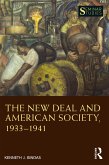This book investigates the impact of revolution on the French from the Revolution of 1789 to its centenary in 1889. It explores specific and linking factors in the main revolts and how historians have differed in their explanations.
Revolution has been explained in a multitude of ways from economic, social and philosophic, to a range of identities including religion, race and gender, contingency, emotions, and most recently global factors. The nineteenth-century French state was threatened by an unprecedented number of revolts. What impact did the 1789 Revolution have on nineteenth-century events? Why were there so many revolutions at the time? Were there common factors? Were non-revolutionary issues as significant or more significant in provoking change? Why was it that insurrection was rarer in the second half of the century when revolutionary rhetoric was more prolific? The book weighs political and philosophical differences, lack of trust and willingness to compromise, economic, social and cultural issues, urban geography, archaeology and contingency. The final section presents some contemporary explanations, written and visual.
This book will be essential reading for A-level and undergraduate historians of France and Europe and will be of interest to general readers keen to understand the impact of revolutions in the modern world.
Revolution has been explained in a multitude of ways from economic, social and philosophic, to a range of identities including religion, race and gender, contingency, emotions, and most recently global factors. The nineteenth-century French state was threatened by an unprecedented number of revolts. What impact did the 1789 Revolution have on nineteenth-century events? Why were there so many revolutions at the time? Were there common factors? Were non-revolutionary issues as significant or more significant in provoking change? Why was it that insurrection was rarer in the second half of the century when revolutionary rhetoric was more prolific? The book weighs political and philosophical differences, lack of trust and willingness to compromise, economic, social and cultural issues, urban geography, archaeology and contingency. The final section presents some contemporary explanations, written and visual.
This book will be essential reading for A-level and undergraduate historians of France and Europe and will be of interest to general readers keen to understand the impact of revolutions in the modern world.
"This well-crafted book poses the question: why do the French have a tradition of revolutions? The answer covers the span of a hundred years of revolution in France, beginning with the Revolution of 1789 and ending with the first centenary of that revolution in 1889. The title is a little tongue in cheek. Pilbeam has chosen a humorous title for what, as she demonstrates, is a serious subject: the causes, course and consequences of the series of revolutions that shook France, the impact of which are still felt today. The book is squarely aimed at A-level students and undergraduates. They will appreciate its style which is incisive, informative and deliberately made accessible for people who are new to the subject. There is a useful apparatus to aid study: the text is equipped with twenty pages of documents, a detailed chronology, a list of leading figures, a glossary of unfamiliar French terms, some illustrations, photographs and maps, and a list of further reading."
Professor Marisa Linton, Kingston University, U.K.
Professor Marisa Linton, Kingston University, U.K.








